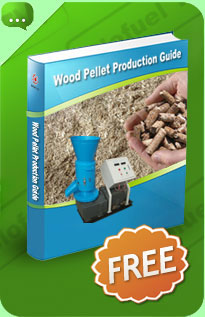Pellet Production Process
The wood pellet production process may be separated into the below procedures:
Raw Material of Pellet Production process
The wood pellet production process starts with the technology of the raw material. In many instances this raw material is really a by-product of some other wood processing operation. Hard wood floors mills are 1 example: They generate big quantities of clean (no bark or dirt), dry sawdust and modest scrap blocks in their operations. This byproduct makes an perfect raw material for pellet production; even so, as the interest in pellet production grows, some mills are generating pellet-making raw supplies directly from trees
Drying of Pellet Production Process
Drying will be the second step in wood pellet production process. The pellet raw material needs to be evenly dried to a low moisture content feedstock (below four percent on a dry-weight basis). As a result of high temperatures and pressures within the manufacturing method, extra dampness can bring about issues as an example, poor consolidation of the pellet (producing dust within the final item). Nonetheless, this low moisture content is also the primary reason why wood pellets burn so properly.
Processing Material
When the feedstock has been dried, it really is fed into a hammer mill to generate wood particles which are a consistent size. This method helps make the pellets a even density to make certain that they offer a consistent heating value in wood pellet production process.
Formation of the Pellets
Pellets are extruded employing unique dies. High pressure (45,000 PSI) and temperatures (200 F) are generated in this method, which softens lignin inside the wood and binds the material inside the pellet together. No extra adhesives are needed, even though at times little amounts of lubricants could be put into increase wood pellet production process.
Total manufacturing facilities can price more than $3 million and need considerable operating expenses and labor inputs.
It takes 1.1 MBTUs of power to create a ton of delivered pellets. The finished pellets contain almost 15 times that quantity of possible heat energy; even so, depending on the source of electricity, this processing energy could be a crucial factor inside the energy, price and environmental impact spending budget.

